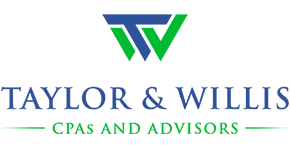HSAs for Business Owners
When enacted, the Affordable Care Act (ACA) eliminated most small-business health plans that reimbursed individually purchased health insurance. Consequently, many small business owners with fewer than 50 employees chose health savings accounts (HSAs) or opted to provide no health coverage at all.
As of 2022, over 35 million HSAs were active, with assets amounting to $104 billion. A 2022 Devenir survey expects this to increase to 43 million accounts with $150 billion in assets by 2025.
HSA basics:
- To open an HSA, you must have high-deductible health insurance.
- 2023 contribution limits are $3,850 for individuals and $7,750 for families. These limits increase slightly in 2024.
- If you’re 55 or older by the end of the year, you can contribute an extra $1,000.
- HSAs come with substantial tax benefits, including deductible contributions, tax-free earnings, and tax-free withdrawals for qualified health expenses.
Monies taken from HSAs are tax-free when used for qualified medical expenses. If you don’t use the funds for medical expenses, those funds grow. Once you reach Medicare age, you can either
- withdraw the funds and pay taxes, or
- use the funds tax-free for medical expenses.
You generally cannot make HSA contributions if you have a non-high-deductible health plan that overlaps with the high-deductible plan. Similarly, you cannot contribute to an HSA and a general-purpose healthcare flexible spending account (FSA) in the same year.
HSAs are similar to IRAs. They are trust or custodial accounts you set up at banks, insurance companies, or brokerage firms. The purpose of your HSA is solely to pay your qualified medical expenses. Like IRAs, HSAs can offer various investment options, though some trustees might limit choices to more conservative options.
The benefits of HSAs have grown significantly in recent years, making them a mainstream and advantageous choice for many. Given their tax advantages and flexibility, the HSA could be a good fit for you as a business owner.
Act Now! Get Your Safe-Harbor Expensing in Place
For 2024, you can elect the de minimis safe harbor to expense assets costing $2,500 or less ($5,000 with audited financial statements or similar).
The term “safe harbor” means that the IRS will accept your expensing of the qualified assets if you properly abided by the safe harbor rules.
Here are three benefits of this safe harbor:
- Safe-harbor expensing is superior to Section 179 expensing and depreciation because you don’t have the recapture period that can complicate your taxes.
- Safe-harbor expensing simplifies your tax and business records because you don’t have the assets cluttering your books.
- The safe harbor does not reduce your overall ceiling on Section 179 expensing.
Here’s how the safe harbor works. Say you are a small business that elects the $2,500 ceiling for safe-harbor expensing, and you buy two desks costing $2,100 each. On the invoice, you see the quantity “two” and the total cost of $4,200, plus sales tax of $378 and a $200 delivery and setup charge, for a total of $4,778.
Before this safe harbor, you would have capitalized each desk at $2,389 ($4,778 ÷ 2) and then either Section 179 expensed or depreciated it. You would have kept the desks in your depreciation schedule until you disposed of them.
With the safe harbor, you expense the desks as office supplies—your tax records life is easier.
To benefit from the safe harbor, you and your tax preparer (meaning us) do a two-step process. It works like this:
Step 1—you. For safe harbor protection, you must have in place an accounting policy—at the beginning of the tax year—that requires expensing an amount of your choosing, up to the $2,500 or $5,000 limit. We can help you with this.
Step 2—us. When we prepare your tax return, we make the election on your tax return for you to use safe harbor expensing. We do this with an election statement on your federal tax return and then file that tax return by the due date (including extensions).
If you want to use this safe harbor in 2024, you need your accounting policy in place on January 1.
Key Insights into Depreciation
Here are some crucial insights into depreciation, particularly regarding business or rental assets.
When Does Depreciation Start?
Technically, depreciation begins not when you use an asset but when it’s ready and available for its intended purpose. For instance:
- A rental property begins depreciating when it’s available to rent, even if it hasn’t been rented yet.
- A farming tool is set to begin depreciation when you receive it, regardless of when you’ll use it.
- A business vehicle begins to depreciate when bought for business purposes, even if not driven yet.
Best Practices
To prevent any ambiguity, if a property is ready for rent, list it. For business vehicles, it’s ideal to drive them for business soon after purchase. This ensures there’s no question about their intent and use.
Assets That Are Vacant, Idle, or Standing By
Even if your asset is temporarily not in use, it doesn’t mean you stop claiming its depreciation. The continued depreciation applies to machines that are momentarily idle because of a lack of demand and to a vacant rental property while you search for tenants.
When Does Depreciation End?
Business and rental properties typically remain depreciable until you remove them from their designated use, often when you sell or dispose of them.











